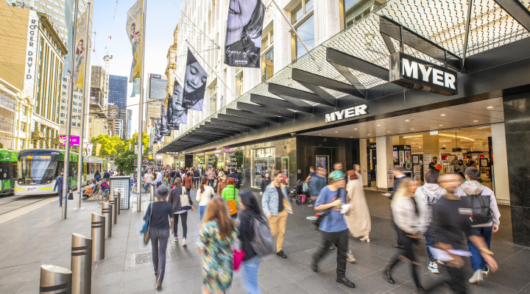Improving the customer experience has been an important point of focus for retailers for quite some time. Ensuring that shoppers enjoy maximum convenience and comfort in stores is a major priority for retail business owners, given that 75 per cent of customers are willing to spend more from retailers providing a good customer experience. Happy customers are happy spenders, who then go on to share their experiences with other potential customers – so investing in their positive impressions of a store makes good business sense.
One of the lessons to come out of the pandemic and its impact on staff, however, is that it’s really both employee and customer experience combined that drives revenue. Recent research suggests that dissatisfied employees are more than 2.5 times more likely to say they do not provide excellent customer service, and 64 per cent of workers say the employee experience directly impacts their ability to serve customers. If staff are overstressed, poorly managed, or not working well with each other, then they’re not going to be able to provide the kind of service that attracts those revenue gains.
According to Roubler founder & CEO Andrew Northcott, CX became a buzzword in retail at around the same time that the industry began to transition away from traditional bricks and mortar towards e-commerce, as it became clear that great in-store experiences strongly support and drive online purchases. Retailers who place an emphasis on the symbiotic relationship between physical and online retail tend to build a strong following – a good example in Australia being Lush and its tendency to employ brand representatives who exhibit a palpable and memorable passion for its products.
“What the Covid-19 situation and the emerging ‘Great Resignation’ have taught us is that retaining staff is critical to this relationship,” says Northcott. “Now people are realising that if they don’t take care of their staff, they will quit – which in turn puts more pressure on the business. Unhappy staff do not make for a good customer experience, so it’s essential to make sure they’re positive and trained well, because that is the fuel for this whole flywheel. If you don’t get the employee experience right, neither customer experience nor higher revenues will fall into place.”
In connecting good experiences for staff with driving revenue for the business, one of the most critical factors is to achieve employee motivation by providing certainty. While better training can support staff in improving their certainty in themselves, setting up systems or software that provide transparency can have an enormous impact on team morale in general.
“If you’re not keeping people up to date with what’s happening, then that creates uncertainty, which isn’t great for the psyche,” says Northcott. “Customer-facing work can be very unpredictable at times, so good systems need to create predictability and good communication. Our app enables this, as employees will have their mobile phones on them most of the time, so an interface connected to their own devices can allow them to see everything they need to know about their shifts in one place. They can access new policies if they get rolled out, and they can set their hours when they’re available or swap shifts with their colleagues. I think that’s about empowering people.”
A sense of certainty at work is also strongly enhanced when businesses are adequately staffed. With the gradual resolution of the pandemic, some predictability around factors such as foot traffic has been restored, making it easier for workforce planning systems to automatically set shift levels in line with revenue forecasts for both busy times and lulls. This ensures adequate resourcing in line with actual sales forecasts and a better environment for employees, resulting in a good customer experience.
“Leaders at every level have to be conscious that their staff are the most important asset,” says Northcott, “especially in this day and age where people are leaving their jobs in such numbers and might have multiple job offers in front of them to leave. You’ve got to make sure as a manager that you’re making things as good as you can for your team so that they want to stick around.”
A strong workforce management system is one of the best tools available to bring stability and transparency to retail staff, while interfacing directly with payroll so that staff are paid predictably and accurately in line with the hours that they actually work – fostering a positive atmosphere for both staff and management – as well as customers.
For more information about Roubler’s solution, visit the company’s website.






